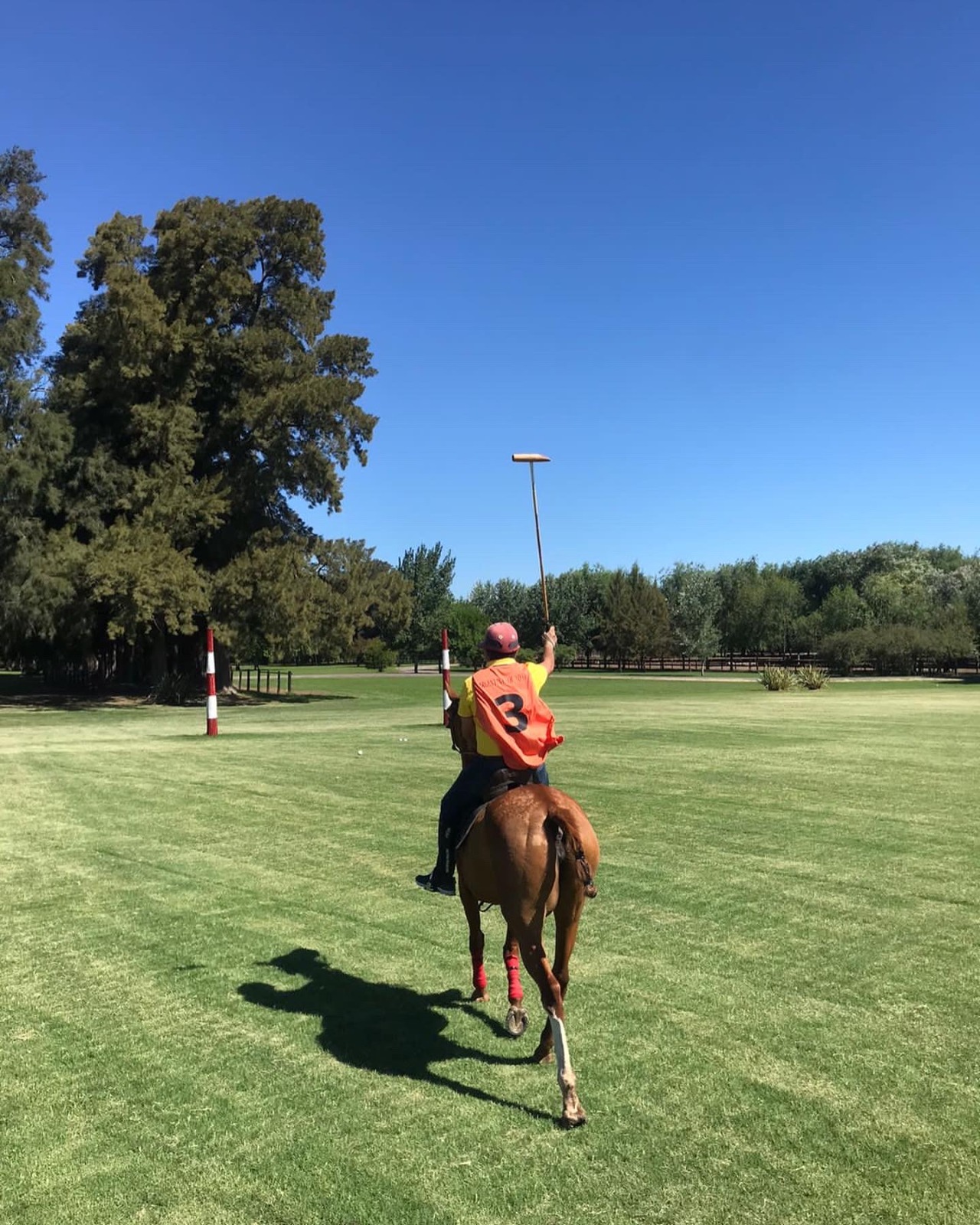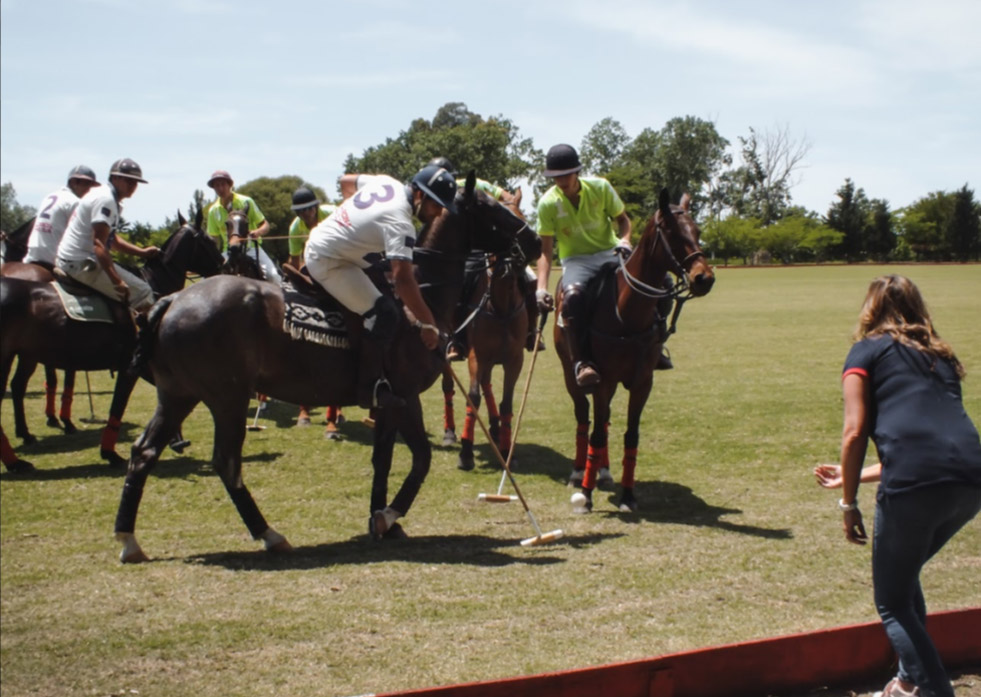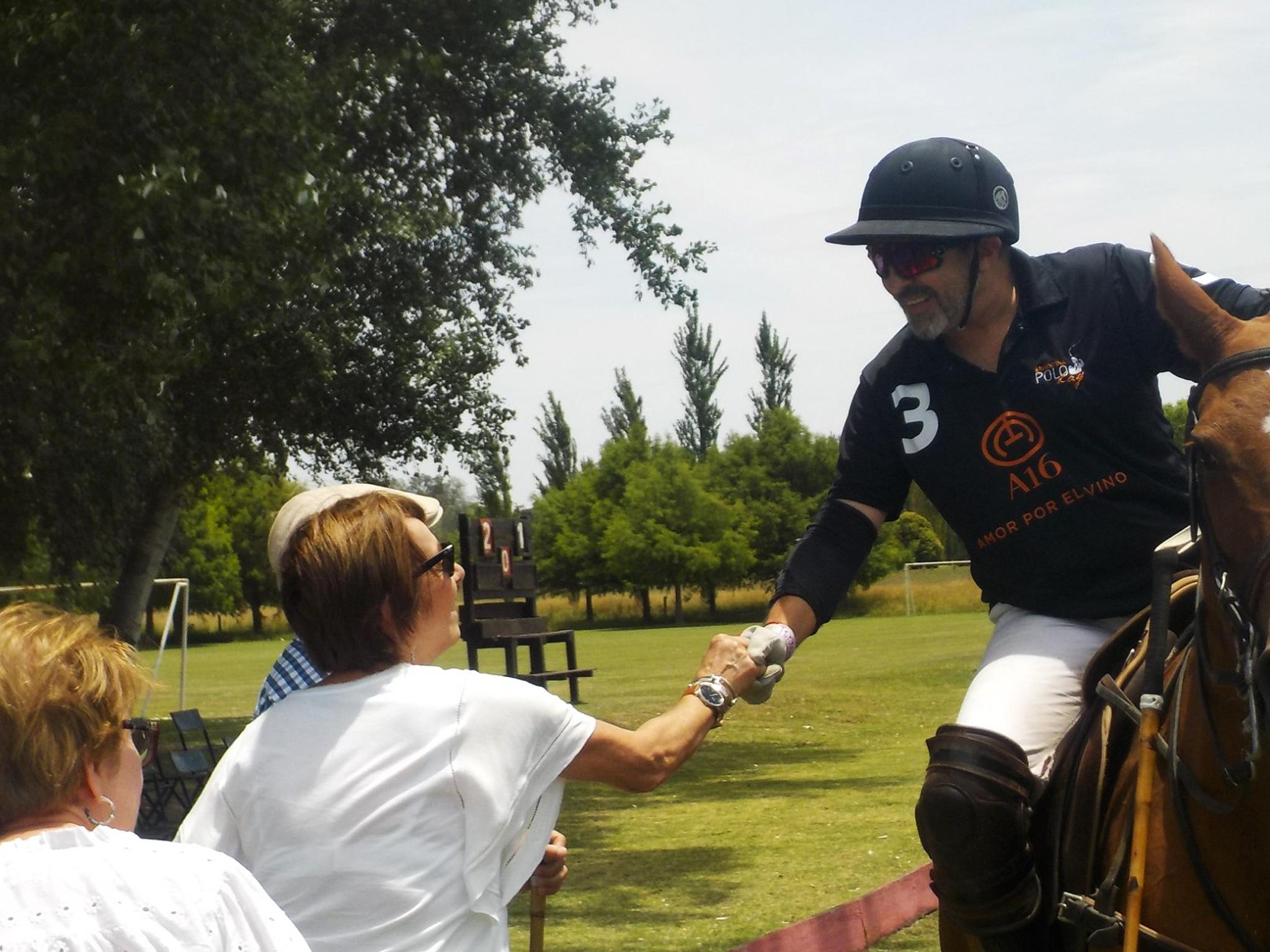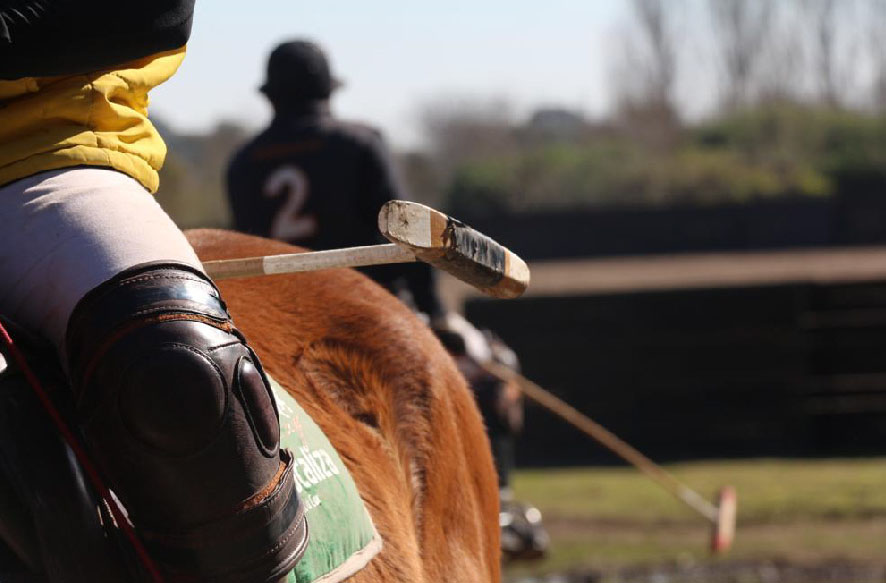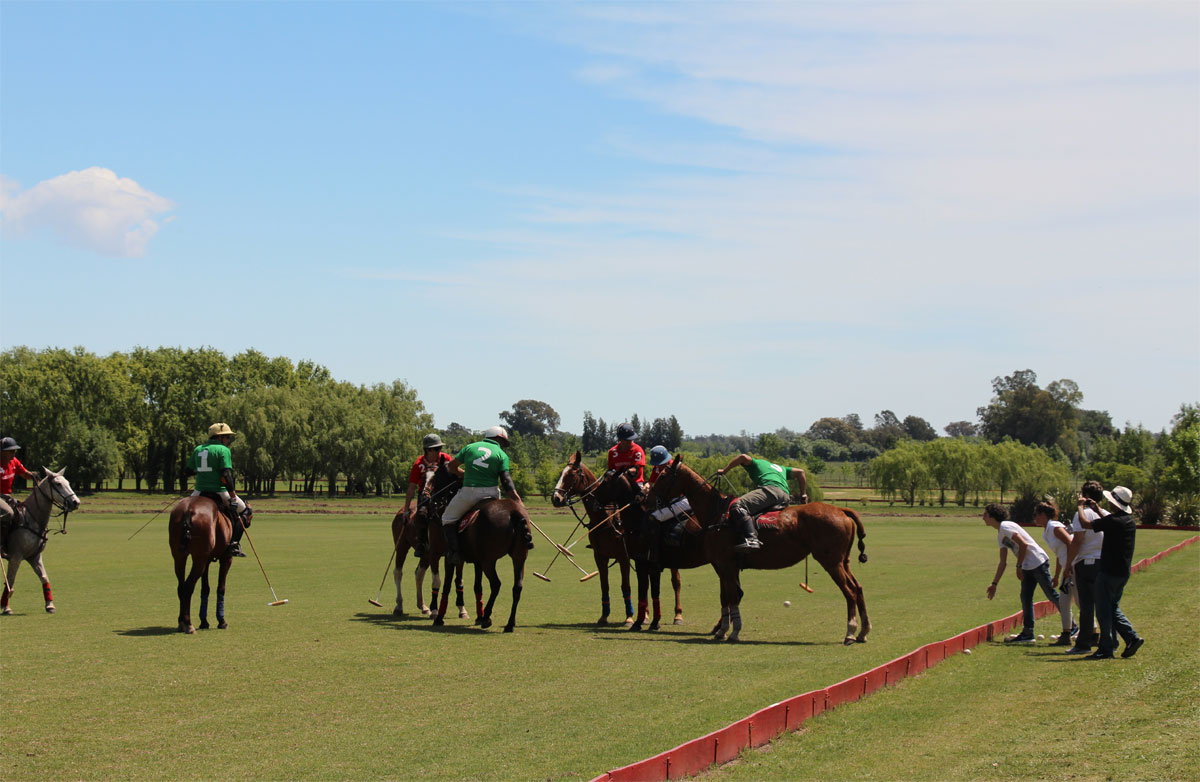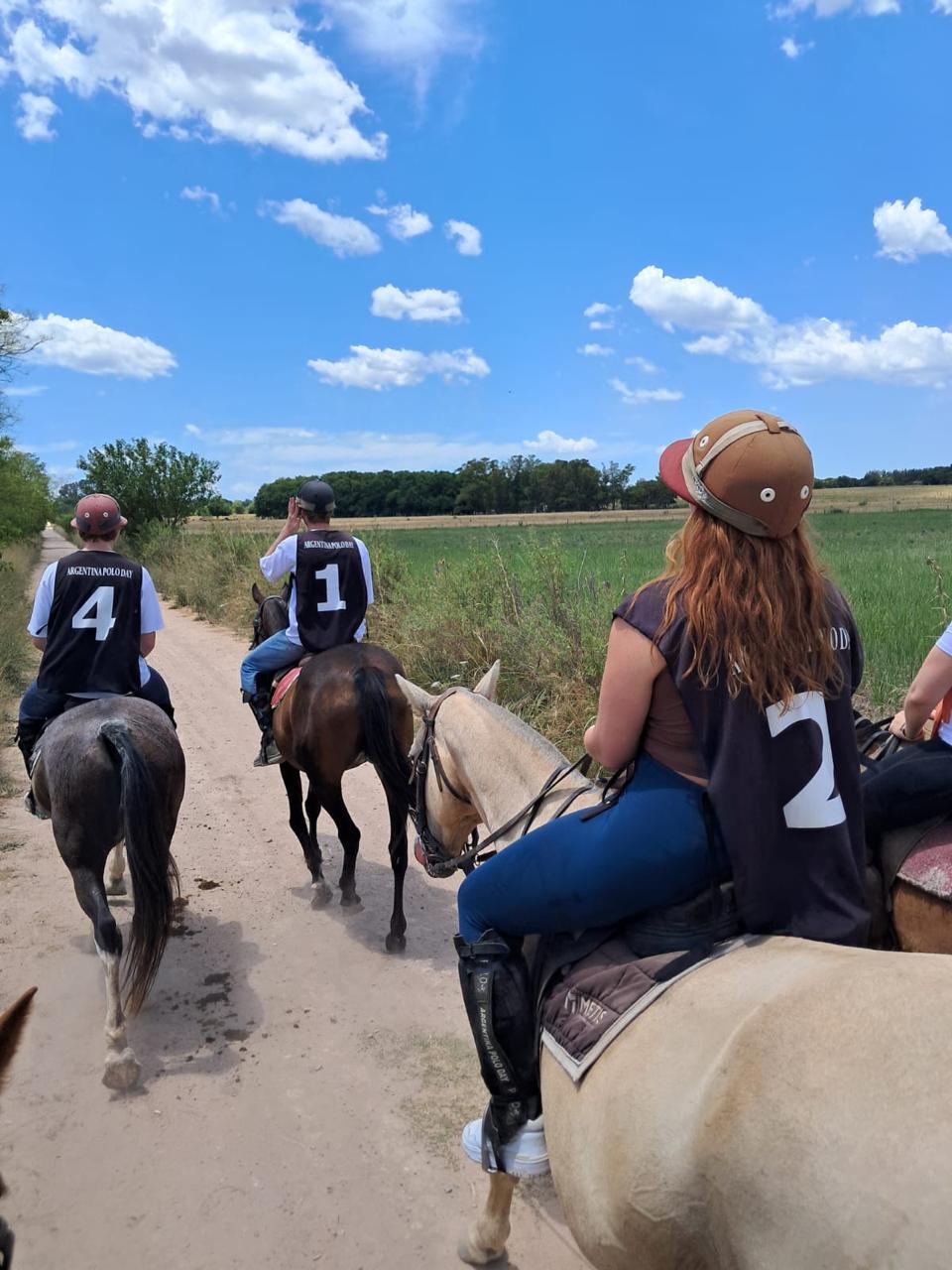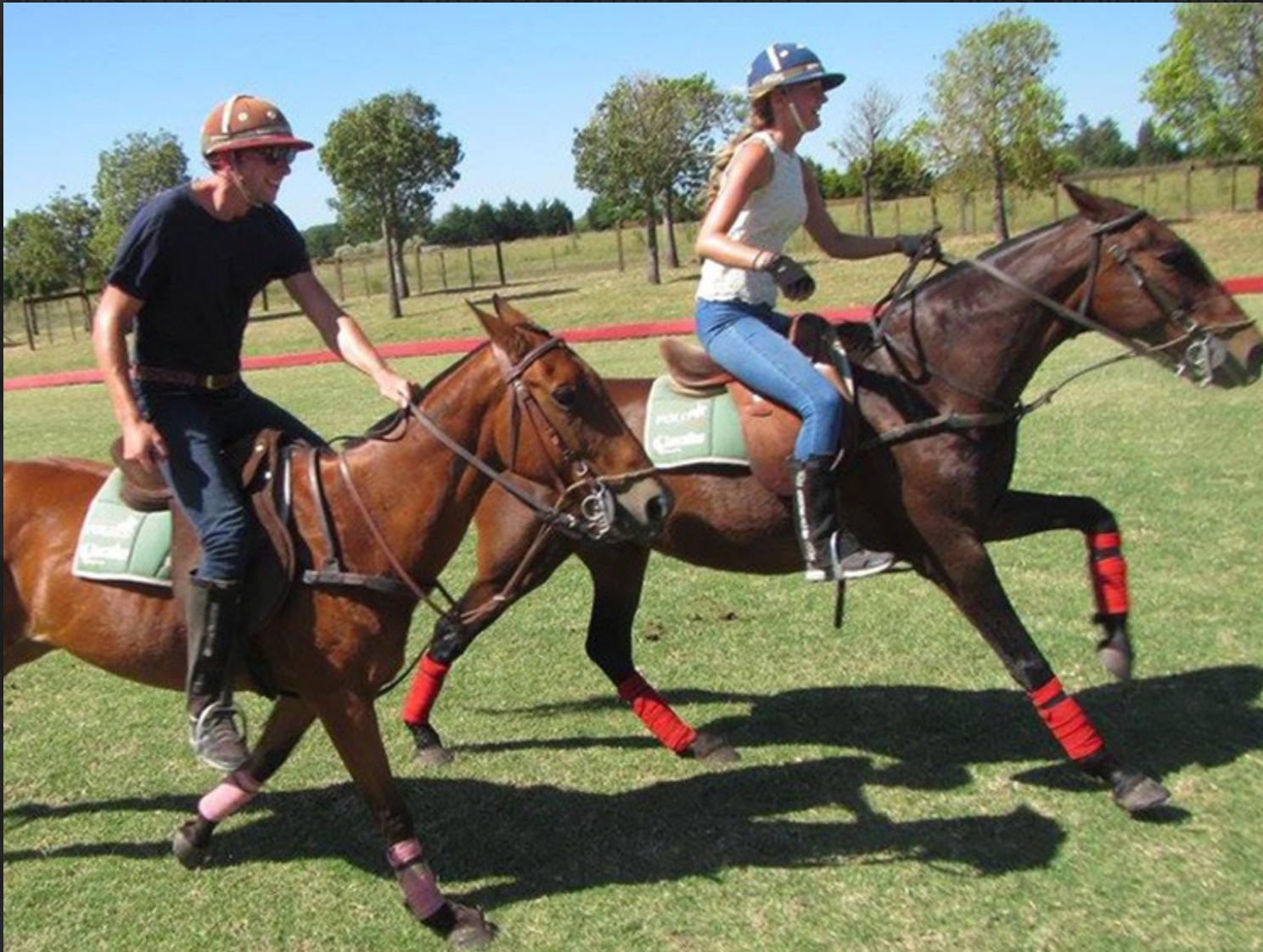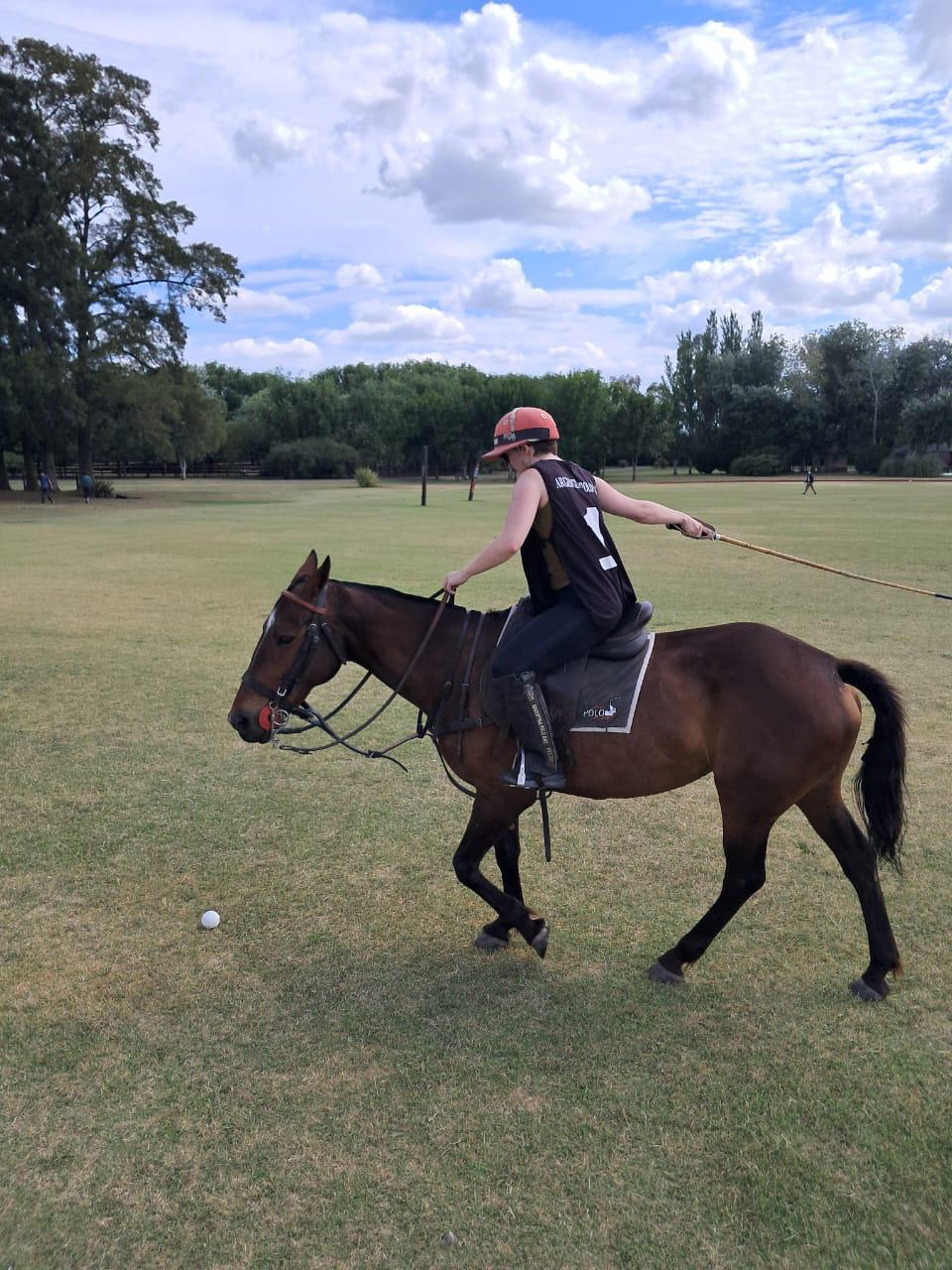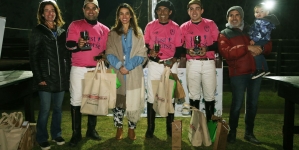-
Después de ser gastronómico se puede manejar un aeropuerto - 14 agosto, 2025
-
DÍA DE ESTANCIA, ASADO Y POLO - 12 agosto, 2025
-
Discover Argentine Polo and Argentina Polo Day: FAQs - 11 agosto, 2025
-
What are Polo Day and Polo Night - 10 julio, 2025
-
What Are the Basic Rules of Polo? - 27 junio, 2025
-
Creando experiencias de alto valor - 6 junio, 2025
-
Encuentro positivo y productivo con Marca País Argentina - 6 mayo, 2025
-
Polo, vino y tradición: una colaboración que destaca lo mejor de Argentina - 8 abril, 2025
-
What Equipment Is Needed to Play Polo? - 25 marzo, 2025
-
Argentina Polo Day Magazine #4 - 14 marzo, 2025
POLO PONY BREEDING
For almost a century Argentina has ruled world polo, its dominance reinforced since the mid-1980s when it pioneered embryo transfers (ET) for the breeding of polo ponies. How does ET work? Three world experts talk with POLO+10.
By Chris Ashton
Thanks to Professor William (“Twink”) Allen, in 1974 Cambridge University claimed equal honours, shared with Japan, for the world’s first successful equine embryo transplant. To this day the New Zealand-born Allen, Cambridge Emeritus Professor of Equine Reproduction and Scientific Director of the Paul Mellon Laboratory of Equine Reproduction in Newmarket, crusades passionately for wider application of the embryo transfer process to the breeding of horses for the entire spectrum of equestrian sports.
Embryo transfers?
“You have a mare that is a champion in one horse sport or another,” he explains. “You want to get more than one foal at a time from her or even one foal without the inconvenience of a pregnancy. So the mare is mated or inseminated and seven or eight days after she has ovulated (that is to say, released the egg into her uterus) the egg is flushed out with a saline solution. It is not yet visible to the naked eye so it is identified under a microscope and is transferred into a recipient mare whose oestrous cycle is similar to that of the donor mare.»
«The recipient mare accepts the pregnancy as her own, although the embryo retains the genetics of its natural mother and the stallion, which impregnated her. The recipient mare can be dumb, lame, blind or stupid but she must be fertile, and must be at least as big as the donor mare so that the embryo she is carrying isn’t stunted as it grows.”
Can the recipient mare’s own behavioural traits influence her unborn foal once it begins to suckle? Allen says that jury is still out on this one but he thinks not.
Allen is proud, and rightly so, of the role of one of his first doctoral students, Australian-born Robert Pashen, in pioneering the commercial application of embryo transfers. In the mid-1980s Pashen introduced the process to the Argentine Polo Breeders Association.
“By culling any mares offered as recipients which he saw had difficult cervixes, he achieved an 80 per cent pregnancy rate immediately,” Allen continues. “What the Argentines have realised, and what the rest of the world is reluctant to accept, is the value of embryo transfers in shortening the generation cycle. After Argentina’s high-goal season, mares now go to estancias where they’re impregnated. These playing mares, mostly between six and ten years old, are highly fertile because they’re young and fit. Three or four embryos can be taken from each mare, although embryos can also be extracted from yearlings. One of the advantages the Argentines enjoy is that they can run 200 to 300 recipient mares in a breeding operation, giving them a wide choice of recipients when donor mares ovulate. The Argentines play superior, athletic ponies. If you believe the ability of a pony comes from its genes rather than from training, then you must use ET to replicate it.”
Now sex-sorted semen and blastocyst biopsy are used to select for female offspring before the transfer. “What we need to do now is improve our freezing techniques so that we can freeze the embryos quickly and efficiently to transfer them elsewhere. We’ve got a 65 per cent success rate now, but it’ll get better. It comes down to this: if you’re playing for fun on middle-of-the-range ponies, then ET is not the way to go. It’s expensive and even the best biological system doesn’t guarantee to give you 100 per cent return. But if you’re competing at the highest level in a horse sport then ET is the tool for your breeding program. To perform at the highest level you’ve got to believe in the technology that goes with it.”
Allen has no patience with the racing world, which expressly prohibits ET:
“The perfect example of why we should embrace ET are two world-class racehorses simultaneously, Black Caviar in Australia and Frankel in the UK. They both go off to stud this year. Frankel has a 95 per cent chance of being a normal fertile stallion that will cover 150-plus mares annually for up to five years at £100,000-plus per mare. Black Caviar is a mare, with a 10 per cent chance of not conceiving as a maiden, a 14 per cent chance of aborting each pregnancy and a 10 per cent chance of producing a bent-legged foal that can’t race. At a maximum she can produce only 10 to 12 foals in her lifetime. How’s that for both genetic and financial unfairness? And how shortsighted not to utilise ET for the genes of that incredible filly. Look at what’s happened with dairy breeding in New Zealand. Line breeding (reducing the number of sires) and progeny testing have trebled milk production in the past thirty years. That’s not better feeding – that’s genetic selection.”
According to the four-day International Embryo Transfer Society Symposium in Vancouver in August in 2012, three countries account for some 80 cent of the annual 40,000 ET pregnancies worldwide: the US (with 5,461, mostly Quarter horses, Arabs and Warmbloods), Brazil (with 12, 422, mostly Quarter horses and the Mangalarga breed) and Argentina (8,226, mostly polo ponies). According to Luis Losinno, Ph.D., Assistant Professor of Equine Reproduction at Argentina’s Rio Cuarto University, Argentina’s success rate with ET pregnancies is one of the world’s highest. Why?
“Because mares are impregnated by stallions stabled at studs providing fresh semen rather than artificial insemination,” he explains. “Working with fresh semen increases the embryo recovery rate by 75-80 per cent, which embryo transfer centers (ETCs) now accept this as the standard rate. In Argentina we also have ample, and ideal pasture for donors and recipients, whereas in other countries breeding stock are fed grain and hay and are kept in stables Brazil leads the world in ET pregnancies but its tropical climate and vegetation is a problem for livestock breeding, with 80 per cent of its ETs managed by chilling or frozen semen.”
Starting with Luis Losinno’s father, formerly a vet with his own racing stud who returned to Rio Cuarto University to lecture in veterinary science and who retired as dean of the faculty, the science and technology of equine reproduction spans three generations of Losinnos. Luis and his brother (also a professor of equine clinics) graduated in veterinary science from Rio Cuarto University, as has Luis’s son, Santiago more recently.
Following a doctoral degree at the University of Idaho, Luis Losinno has specialized in equine reproduction ever since. Half his working hours are devoted to applied research and to graduate training courses. Another 40 per cent is assigned to teaching equine production courses to undergraduates, including guest lectures at other Argentine universities and elsewhere in Latin America with the remainder of his time given to consultancy services at ETCs in Brazil, Columbia, Chile, Peru, Central America and the US, as well as Argentina.
He rejects the idea of equine reproduction as a science:
“It’s biotechnology drawing on knowledge derived from basic and applied science,” he replies. “It’s about developing systems and instruments to resolve the reproduction problems of stallions and particularly of mares.” He dates the application of biotechnology in equine reproduction to the early 1980s with the advent of ultra-sound echography. “It’s a technology which transmits sound waves in real time. For the first time we could diagnose all the problems common to pregnancies. Until then we were flying blind. It’s very fast and today it’s a routine part of any breeding program in the world.”
Embryo transfers followed:
“The first foal from an embryo transfer was in 1974 but developing the bio-technology for a viable production system took 15 years.”
Today he identifies four major challenges facing equine biotechnology:
(1) Pre-determining the sex of the embryo;
(2) Freezing embryos for commercial export. (“The complex structure and chemical composition of the equine embryo, compared with other livestock like cattle, has thwarted experiments over the past thirty years to freeze them by conventional means.”)
(3) Follicular stimulation (superovulation). “An effective protocol to induce multiple ovulation and embryo recovery in poorly performing mares.”
(4) Assisted reproductive techniques for very valuable mares or stallions with acute reproductive problems for which the ET process cannot be applied.
Of the many the challenges to improve equine reproduction, Losinno has particularly on how to extend the efficiency of artificial reproduction to intensive commercial programs, not least the breeding life of mares: “The most valuable mares are usually the oldest. It is they who have shown over time their capacity to produce progeny which perform well in polo. But it takes ten to fifteen years to confirm this and a mare’s reproductive capacity starts declining after she turns fifteen.
A mare between four and fifteen on average can produce four to six embryos by the ET process during our polo season. An older mare, sixteen or more, can produce two embryos, and eventually her capacity declines to zero. The owners want them to continue breeding because their progeny are proven. One of the things I’m working on – and this was the subject of my doctoral thesis – is to improve the productivity of older mares. One solution is the assisted reproductive process, which is very complex. As with humans, it can improve fertility by up to twenty per cent. Other processes include hormone management (also used by women), and reproductive cloning, which can prolong an animal’s reproductive life up to twenty years.”
The first equine clone was a mule born in the US in 2003. This was matched in the same year in Italy by one of the world’s leading researchers in clone biotechnology, Professor Cesare Galli, who produced the first cloned foal. It’s a complex and inefficient biotechnology because it’s unnatural to a mammal. Argentina and the US are the only countries now developing cloning for commercial markets. To mention the name Mac Donough in polo circles is to conjure up two Argentine brothers, Matias, 39 with an 8-goal handicap, and Pablo, 30 playing off ten goals. Switching from playing polo to breeding, however, puts their father firmly centre stage. Outside the market town of Dairaux, 250 miles southwest of Buenos Aires, is the 450-hectare polo pony breeding stud, La Irenita Embriones, coupled with La Laguria, a 1000-hectare estancia, once entirely committed to cattle and crops, together with two rented farms adding another 1,100 hectares.
By way of La Irenita–Ebriones, Jorge Mac Donough is at the cutting edge of ET. Jorge:
“Our first objective is to see the boys as well mounted as possible. I belong to the school of thought that says you must breed from the best. I also believe that you should breed as many as possible so that you have the widest choice. That is one of the reasons why Argentina is better at polo than anywhere else, because we have such high numbers from which to choose the best.” The 100-plus foals surplus to what Pablo and Matias take for their own polo are sold as unbroken yearlings. “We only break in those we’ve chosen for the boys,” their father continues.
“In Argentina there is a perception, not entirely justified, that any horse which is broken in and offered for sale must be rubbish and not worthy buying.” Beyond providing his sons with his best progeny to advance their polo careers, Mac Donough offers ET services to others breeding for polo. As to whether breeding for polo is best served by nature’s way or ET Mac Donough insists ET is the way to go: “ET allows us to breed many offspring from superb mares which are still playing. We can try out new mares as three- or four-year olds to discover the best, while discarding those that are not. ET shortens the generation gap among the best and allows us to assess different stallions with the same mares in one generation to determine the best sires and the most efficient combinations.”
Other services offered by La Irenita-Embriones include the impregnation of clients’ mares by its own stallions. Given the competing claims on mares to play the Argentine season, clients seeks embryo transfers from their playing mares during the polo season from October to March. At its peak, from late December to March, La Irenita’s vets, supported by some 30 staff, typically do twenty ETs per day. To feed its breeding stock and their offspring, La Irenita-Embriones must also provide winter and summer pastures and such grains as maize, soybean, barley and oats.
In April and May foals are selected as prospective polo ponies, to be weaned from their mothers. All year round horse-breakers work with “green” horses, in the case of colts from 24 to 30 months old, and with fillies between 30 and 36 months old. Acknowledging his debt to Monty Roberts, the US author of Horse Whisperer, for his insights into horse psychology, Mac Donough estimates that each of his own “green” horses will do hundreds of bouts of short-term tuition, including slow chukkas, before they are ready for what he calls “white-britches” polo. Of the thirty-odd colts selected for schooling and polo, two thirds are gelded beforehand.
“Some breeders castrate them when they’re still with their mothers because it is easier or because they want them to be more like mares,” he says, “but others, and here I include myself, prefer to castrate them as late as possible because, with their male hormones, they complete their growth cycle earlier, thus generating a shorter, more robust and compact colt.”
Mac Donough started out as an equine vet, employed by successive Thoroughbred studs until in the mid-1990s when he bought La Irenita and La Liguria. His passion for racing competed with his passion for polo, however, whether playing the low-goal game for pleasure or employed as a vet by the Dorignac brothers during their glory days when the Santa Ana team dominated the Argentine high-goal game.
A four-goaler at his peak, in 1979 Mac Donough played in England for polo patron Mark Vestey while in Argentina he won handicap tournaments including Cacique, 9 de Julio and La Copa Santa Paula. Thanks to Eddy Moore, the Argentine player who pioneered patron-professional polo, Mac Donough met the Sultan of Brunei who, with his brother Prince Jeffri succumbed to polo’s siren call, over ten years from the mid-1980s commissioned Mac Donough to provide them with polo ponies, 800 over ten years, flown to Brunei in Boeing 747s, one hundred ponies per flight.
As a long-term polo spectator, Mac Donough is in no doubt that the Argentine game has changed for both good and ill:
“The horses have improved but there’s no way they could play a whole chukka in high-goal polo as they once did. If you train a horse to play for two or three minutes then it can’t play for seven minutes. Look at Cambiaso: he needs three horses to play a chukka and he does it very well. Some people say you should train a horse to play a full chukka. I don’t think it’s possible because the players are asking so much of their horses now. Thirty years ago the pace at which polo ponies played the game was more regular.
They didn’t stop and turn and often start as they do now. It takes a lot out of a horse compared with the more rhythmic breathing of the running horse. If you’re stopping and starting and turning, you need a very co-ordinated horse to do all these things and retain the oxygen they need. Some people want to bring in a rule that you can’t change horses mid-chukka but that’s what polo has become, and you can’t go back to what it was. All the mares playing in Argentine high-goal polo are in some sort of ET breeding program. This has an incremental effect in raising the quality of polo ponies throughout Argentina and eventually in other parts of the world. For sure, buying off the racetrack is cheaper than breeding for polo but the thing is that racehorses are bred for racing, not for polo. When you get to the pedigree-bred Polo Argentino polo pony, the odds are that it will much more successful.”
Source: Polo +10 Magazine
For more information about Polo: www.argentinapoloday.com.ar
| Argentina Polo Day




